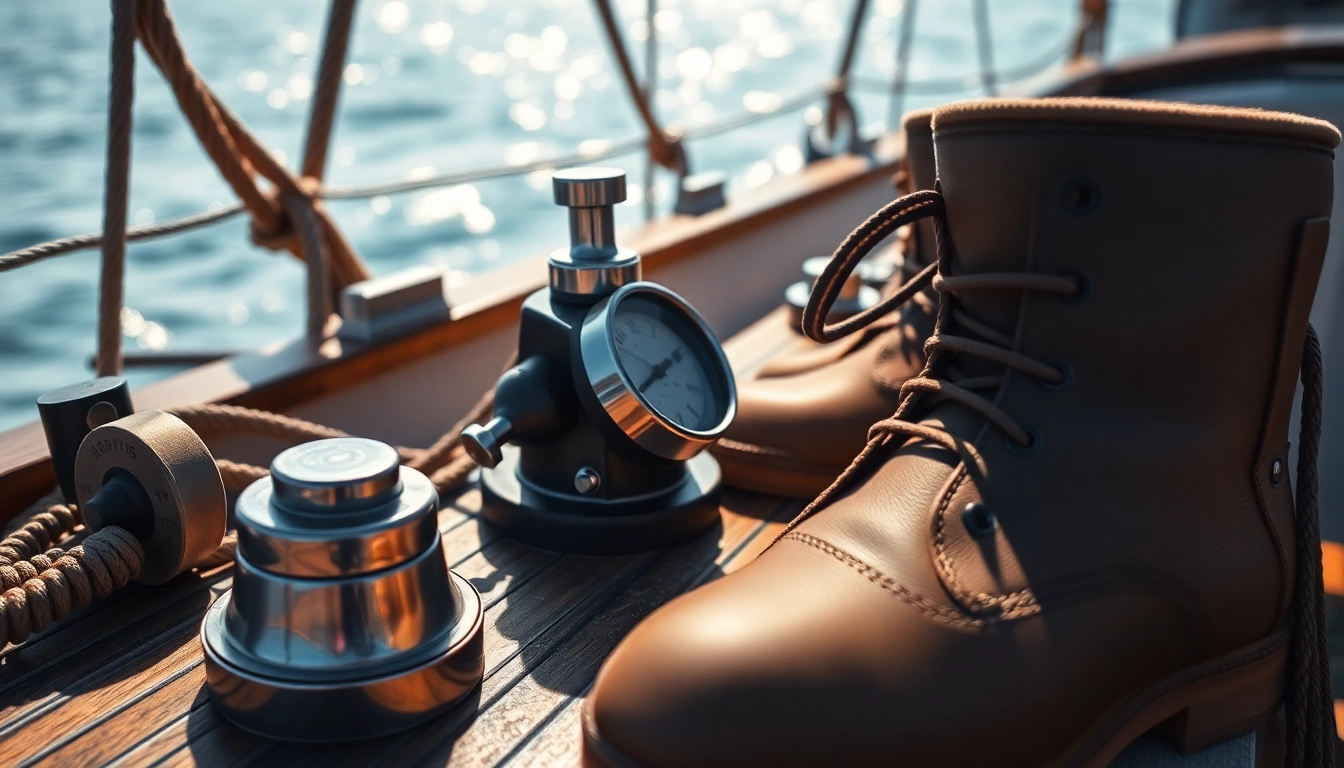Introduction to Boots Versegelung and Its Significance in Marine Navigation
Navigation at sea has evolved over centuries, employing a blend of traditional techniques and modern technologies. A crucial aspect of this process is Boots Versegelung, which refers to the methods used to determine a vessel’s position relative to known landmarks or celestial bodies. Mastering this skill is essential for sailors who wish to navigate safely, especially when electronic systems fail or are unavailable. This comprehensive guide delves into the fundamentals of Boots Versegelung, exploring practical techniques, equipment choices, and best practices to enhance your navigation accuracy and confidence on the water.
Understanding the Basics of Boots Versegelung
Anatomy and Importance of Boots Versegelung
At its core, Boots Versegelung involves measuring angles and directions from your vessel to fixed points on land or in the vicinity. This process allows mariners to plot their position on nautical charts with precision. Effective versegelung is vital in scenarios such as sailing through unfamiliar waters, approaching harbors, or conducting offshore crossings. It improves situational awareness and reduces dependency on electronic navigation, providing a backup method that can be relied upon in emergencies.
Key Navigation Principles for Sailors
Successful navigation hinges on understanding several core principles, including bearing measurements, use of landmarks, and triangulation. Bearings are angles measured relative to the vessel’s heading, typically using a compass or visual cues. By taking multiple bearings of different known points, sailors can accurately determine their current location via triangulation—a method that combines these angles to pinpoint their position on the chart.
Common Mistakes in Boots Versegelung to Avoid
Precision in versegelung demands meticulous technique. Common pitfalls include misreading angles due to shaky hands or misaligned instruments, neglecting local magnetic anomalies, and failing to account for movement or tide effects. Additionally, inaccurate identification of landmarks or miscalculations during plotting can lead to significant errors. Regular training, verifying calculations, and using modern tools can help mitigate these issues.
Advanced Techniques and Methods for Safe Boots Versegelung
Manual Peilung (Bearing Measurement) and Its Application
Manual peilung remains a foundational skill in marine navigation. It involves visually aligning a compass or binoculars with a landmark or navigation aid and recording the magnetic or true bearing. To improve accuracy, sailors should use a distant object with a known position, ensure minimal instrument movement, and verify readings with multiple attempts. Practice in different visibility conditions enhances proficiency.
Leveraging Modern Navigational Instruments
Today’s navigators benefit from advanced tools such as hand-held GPS devices, electronic compasses, and radar systems. These not only streamline the process but also increase precision. Digital bearing analyzers and chartplotters can instantly process multiple data points, allowing for rapid recalculations if conditions change. Yet, it remains crucial to understand traditional techniques as a backup, ensuring safety under all circumstances.
Integrating Boots Versegelung into Nautical Charting
The practical application of versegelung extends to accurate plotting on nautical charts. Once bearings are taken, they are translated into plot lines on the chart, intersecting at a point indicating the vessel’s position. Continual updates with real-time measurements help maintain situational awareness, especially during complex navigation through narrow channels or crowded harbors.
Selecting the Right Equipment for Precise Boots Versegelung
Tools and Devices for Accurate Bearings
High-quality compasses, binoculars, and dedicated navigation aids enhance measurement precision. Marine binoculars with stabilized optics and reticle features enable better sighting over long distances. Hand-held or integrated compass systems with declination adjustments ensure true bearings are obtained correctly, vital for accurate plotting.
Maintaining and Calibrating Navigation Instruments
Regular maintenance and calibration are essential to sustain accuracy. This includes checking compasses for deviation caused by magnetic interference within the vessel, updating electronic systems’ software, and verifying the alignment of sighting devices. Proper storage, cleaning, and periodic calibration with known references prevent cumulative errors and prolong instrument lifespan.
Recommended Equipment Sets for Optimal Navigation
Comprehensive navigation kits should include a durable compass, high-quality binoculars, plotting tools such as rulers and protractors, and backup batteries for electronic devices. For example, a specialized Boots Versegelung set could feature a magnetic compass, a portable GPS unit, and an analog or digital chartplotter, providing flexibility and redundancy in navigation efforts.
Practical Guidance and Best Practices
Step-by-step Guide to Conducting Effective Boots Versegelung
- Preparation: Ensure all instruments are calibrated and your charts are up-to-date.
- Identify Landmarks: Select fixed, easily recognizable landmarks or navigation aids at a safe distance.
- Measure Bearings: Using your compass or binoculars, obtain bearings to each target, noting the exact angles.
- Record Data: Log all bearings carefully, noting your heading and environmental conditions.
- Plot Lines: Transfer the bearings onto your chart, drawing lines from each landmark based on the measured angles.
- Determine Position: Find the intersection point of the plot lines—this is your current position.
- Validate: Cross-check with additional landmarks or electronic means to confirm accuracy.
Diagnosing and Correcting Errors
If your plotted position does not match expected locations, consider sources of error such as magnetic deviations, instrument misalignment, or inaccurate landmark identification. Re-measuring bearings, recalibrating instruments, and cross-referencing readings with GPS or known points can help rectify issues.
Continuing Education and Skill Improvement
Attend navigation workshops, participate in simulation exercises, and practice in various visibility conditions. Staying updated on new tools and techniques ensures your skills remain sharp, and your navigation remains reliable under all circumstances.
Frequently Asked Questions about Boots Versegelung
What should I pay special attention to during Boots Versegelung?
Accuracy in angle measurement, correct landmark identification, and awareness of magnetic deviations are paramount. Regular training and proper calibration of tools minimize errors, ensuring safe and precise navigation.
How can I improve the accuracy of my bearings?
Using high-quality instruments, practicing steadiness, and factoring in local magnetic disturbances enhance precision. Confirm measurements with multiple attempts and cross-reference data for validation.
What future technologies will impact Boots Versegelung?
Advancements such as augmented reality navigation overlays, AI-assisted plotting, and enhanced satellite-based augmentation systems are poised to make marine navigation even more precise and accessible, complementing traditional skills.


